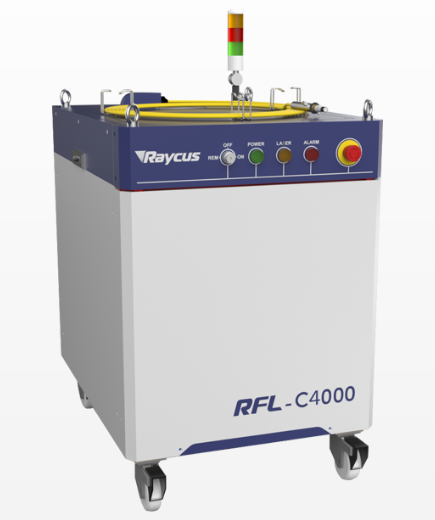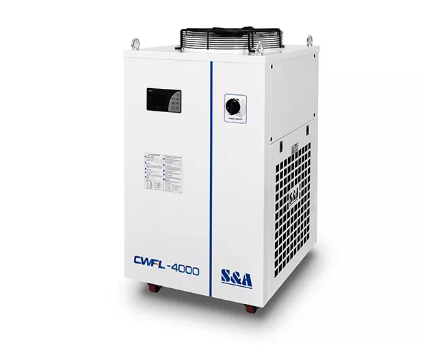Apr. 13, 2022
Antifreeze measures for optical fiber cutting machine in winter.
Today, Zhongli will share with you the antifreeze measures for fiber laser cutting machines in winter.
Antifreeze principle of fiber laser cutting machine
Liquids have a "freezing point". When the temperature of the liquid is lower than the "freezing point", it will solidify to form a solid. After the water solidifies, the volume will increase, which will cause the laser and the internal pipeline of the water cooling system to rupture or deform. If the cold water pipeline is broken and the machine is turned on, it may cause the coolant to overflow and cause damage to the relevant core components. In order to avoid unnecessary losses, please be sure to take correct antifreeze measures.
Laser source
>>>>Suitable for frequent use of fiber lasers and continuous operation

Recommended use: Clariant Clariant industrial grade antifreeze (model: Antifrogen N, glycol-water type, industrial supplies, toxic to humans). The use volume accounts for 10% -20% of the volume of the water tank, and cannot exceed 20%.
Note: Propylene glycol-water type (food grade) is prohibited!
>>>>Suitable for the case where the fiber laser does not need to run continuously
The medium-power laser only needs to keep the chiller running at night without powering on; the high-power laser (maximum power above 2000W) is kept on at 24V to ensure that the coolant is in a circulating state and the temperature is not lower than the freezing point.
Water Chiller

Install air conditioning or heating facilities to keep the ambient temperature around 10 degrees Celsius.
Operate the refrigerator for 24 hours, and the water will not freeze under the state of circulating flow.
Add ethylene glycol antifreeze to the water tank to prevent freezing, and its ice changes with the concentration of ethylene glycol in the aqueous solution.
When the fiber laser cutting machine is not used for a long time or in the state of power failure, be sure to empty the water in the water tank of the refrigerator.
Drainage method
Laser-specific water cooler and main drainage parts of water tank: water tank, pipeline, pump head, filter, deionization tank (optional)
1. Disconnect power to equipment involved in draining.
2. Water tank drainage method: Open the drainage valve (or drain plug) at the lower part of the water tank to drain the water in the water tank. If necessary, tilt the water cooler at a certain angle to make the drainage more clean.
3. Drainage in pipelines and lasers: first unplug the four-way water pipes, and then use compressed air to blow through the drain inlet and outlet of the pipeline for 1 minute respectively, and force the water stored in the pipeline back to the water tank, and drain the water from the drain port of the water tank.
4. Unscrew the filter element in the refrigerator and drain the water in the filter element.
5. Open the water tank cover to observe whether there is still water in the water tank (you can use compressed air to connect the water supply port to blow back again, and force the residual water in the pipeline, laser (pipe), and water pump back to the water tank, and then discharge it from the water tank drain) , if any, tilt the chiller slightly to drain off the water or dry it with a dry towel.
6. Drainage of the pump head: Unscrew the drain screw under the water pump to empty the water in the pump. It is best to blow out the residual water in the pump head with compressed air, and then tighten the drain screw.
7. Drainage of filter and deionization tank: Open the drain valve at the lower part of the filter, deionization tank or the plexiglass shell to remove the residual water.
Conditions and methods for adding antifreeze to cooling water
1. Name: Antifreeze ethylene glycol (also known as glycol), which can be purchased at local hardware and chemical stores and online, but there are restrictions on liquid transportation.
2. The ratio with deionized water is at least about 30% and preferably 50%, (70% water, 30% ethylene glycol)
3. The ambient temperature must be added below zero (inclusive).
4. Ethylene glycol is not equal to ethanol (alcohol), please be sure to distinguish.
Precautions
▶Excessive gas pressure for draining can easily damage the laser. The antifreeze concentration is too high to increase the water circulation resistance.
▶All cooling water in the laser, laser output head, processing head and water cooler must be drained cleanly to effectively protect the entire water cooling pipeline and related devices.
▶When unplugging the water pipe, please mark the interface sequence to prevent reverse installation.
▶For the chiller, if you want to refill the water after returning from the holiday, be sure to exhaust the water pump before starting it, otherwise the water pump will be damaged.
▶Any antifreeze cannot completely replace deionized water and cannot be used for a long time throughout the year. After the winter, please pay attention to replace the normal cooling water, and before that, clean the pipeline with deionized water or pure water, remove the antifreeze, and resume using deionized water or pure water as the coolant.
The above are the antifreeze measures for fiber laser cutting machines in winter. Please master the relevant knowledge and add warmth to your equipment in winter!
+86 18615585751
linda-service
C1, Floor 3, Shuntai Building, Gaoxin District, Jinan City, China
